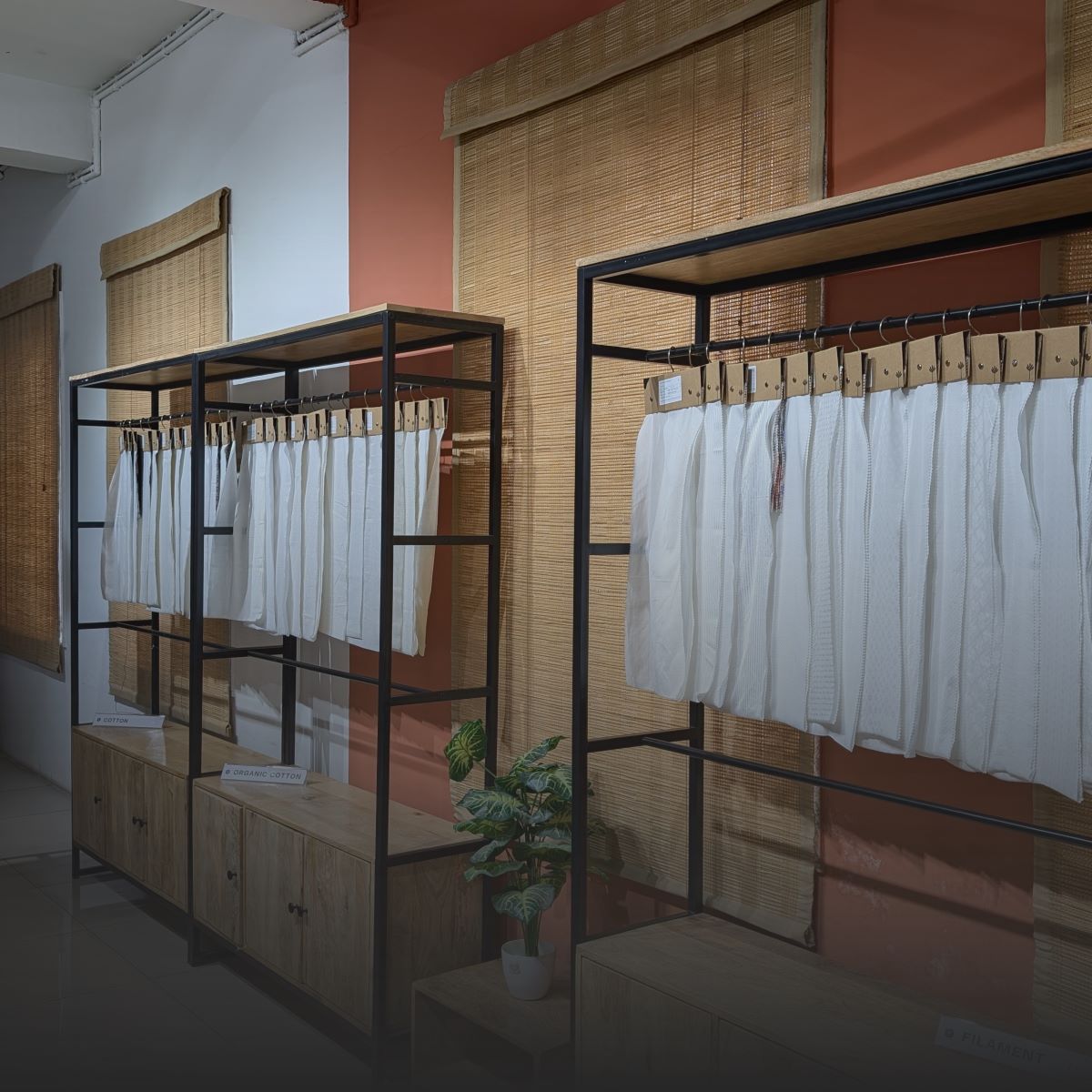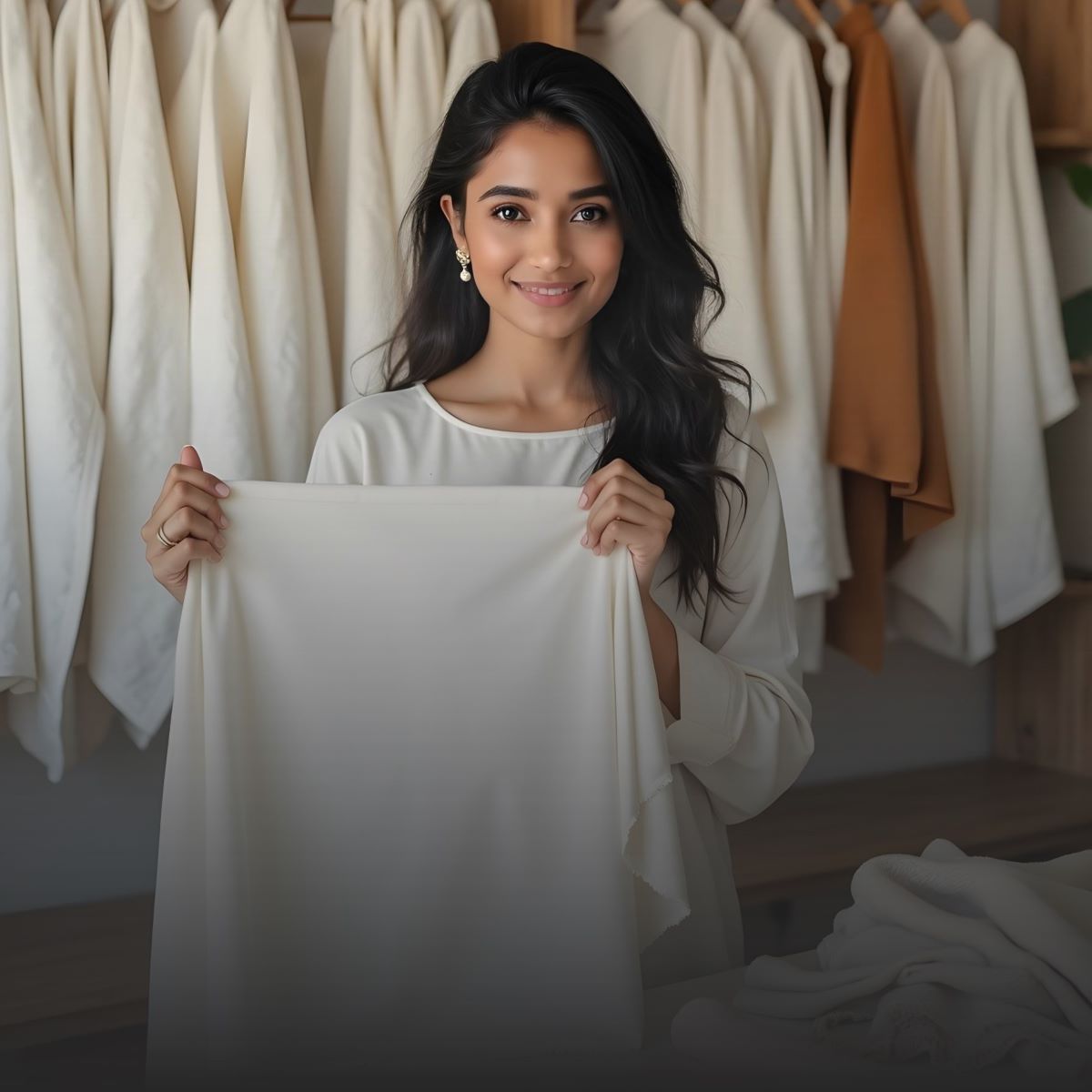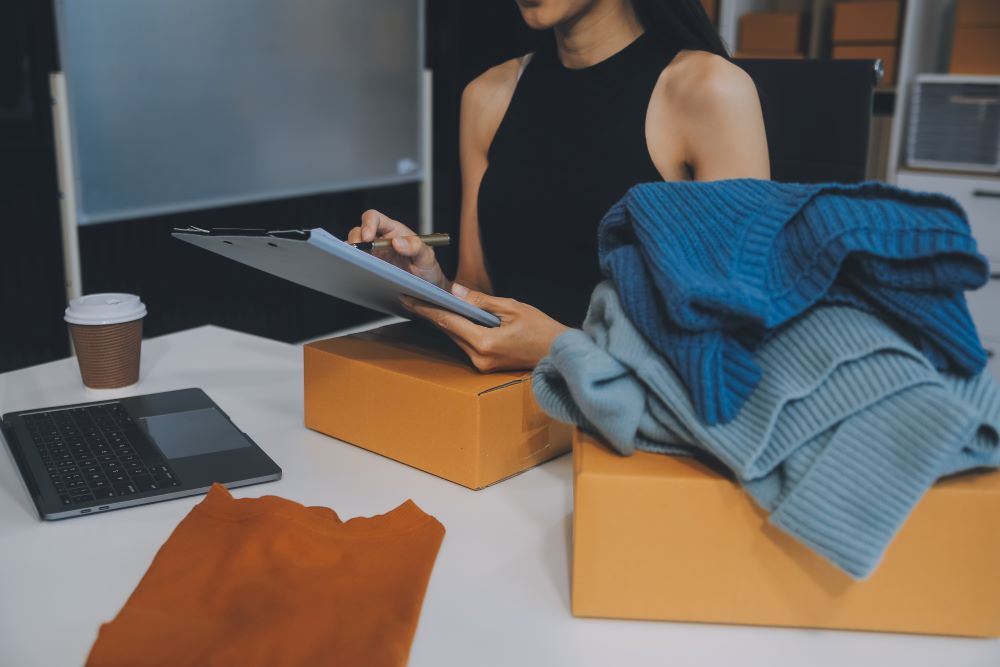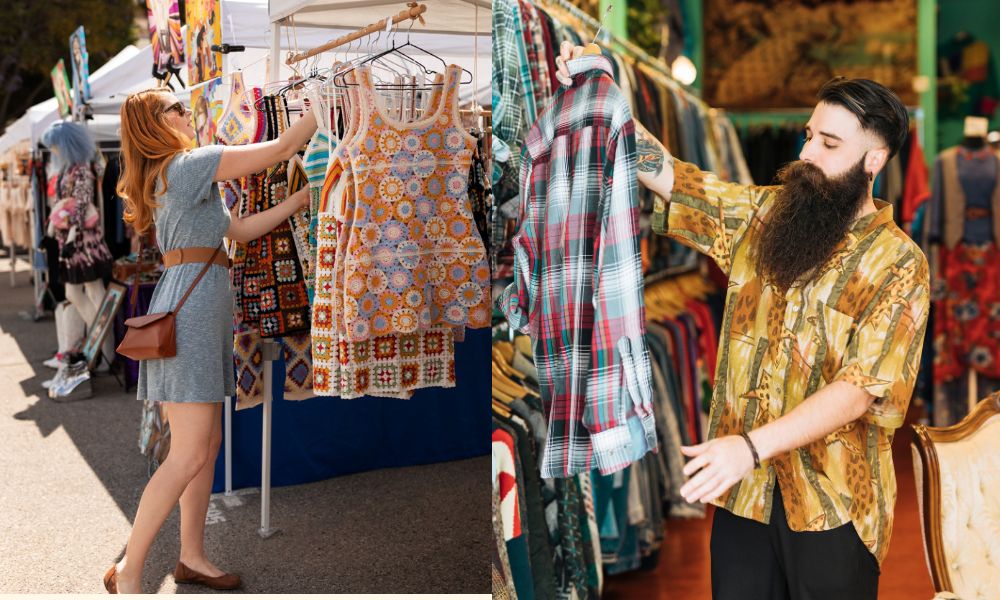Fabric sourcing from other countries, especially India, is still a smart move for American designers, shops, and fashion names in today's fast-paced global market. Setting up complex US tax policies and changing import fees, on the other hand, could have a big effect on your prices.
These days, finding good fabric suppliers takes knowing a lot about the business, planning, and having good relationships with those suppliers. This guide will teach you how to deal with US tariffs when buying fabrics from India and give you tips on keeping your sourcing process running smoothly and your business making money.
Understanding The Tariff Situation

Under the Harmonized Tariff Schedule (HTS), the United States charges import taxes on clothing and textiles. There are different types of fabrics with different import duties. The duty can be anywhere from 0% to 32% for synthetic blends or cotton, linen, polyester, silk. As an example:
- Cotton fabrics (HTS Code 5208.39): ~7.9%.
- Polyester blends (HTS Code 5515.11): ~12.0–14.9%.
- Wool suiting: ~16.0%.
- Certain synthetics and spandex: up to 32%.
Some free trade agreements (FTAs), like CAFTA-DR or USMCA, eliminate tariffs. However, India has no such agreement with the U.S. right now, so it has to pay WTO taxes.
However, many different kinds of fabric can still be put into lower-duty categories if you use HS classification correctly and carefully follow the rules for paperwork.
Why India Remains Strategic For USA Buyers

India is still a great place to buy textiles, even though there are taxes. Here's why:
-
Competitive Pricing: Indian labour, raw material, and processing costs are still cheaper than in many other countries, even with duty rates.
-
Diverse Materials: India is a world leader in sustainable fabrics like hemp and organic cotton as well as cotton, linen, silk, viscose, and modal.
-
Customization & Craftsmanship: Many people in the US like the uniqueness of handloom methods, block print fabric, and custom fabric printing.
- MOQ Flexibility: Indian wholesale fabric manufacturers often work with small to medium-sized businesses, letting them choose how to place their wholesale fabric by the yard orders.
Cost-Saving Strategies For Usa-Based Fabric Buyers Sourcing Fabric From India

Fashion brands, shops, and designers in the US can get a wide range of textiles at low prices by fabric sourcing from India. However, figuring out how to deal with USA taxes and import rules can be hard. Here are some good ways to keep your buying process smooth and profitable when you buy fabric from India. They will help you save the most money and avoid any surprises.
1. Use the Correct Harmonized System (HS) Codes
To avoid paying too much import taxes, fabrics must be correctly classified under the Harmonized Tariff Schedule (HTS). Work with your Indian fabric sources to ensure the correct HS codes are given out based on the weave and fiber content. As an example:
-
5208.39.10 – Cotton plain weave, printed, with less than 85% cotton content
-
5512.19.00 – Polyester staple fiber blends, plain weave fabrics
Pro Tip: Always ask your supplier for a business invoice and packing list that clearly lists the fiber composition and the HS code that goes with it. This openness helps customs workers use the right duty rates and avoids delays that cost a lot of money.
2. Keep an Eye on the Generalized System of Preferences (GSP)
India's GSP title was taken away in 2019, but talks are still going on to get it back. If it is brought back, taxes on some Indian fabrics might go away or be greatly reduced, which would be good for your purchases of cotton fabric wholesale or linen fabric by the yard.
Pro Tip: Sign up for U.S. Customs and Border Protection (CBP) trade reports or talk to trusted customs brokers to stay current on any changes to GSP status and tariff exemptions.
3. Prioritize Natural Fibers for Lower Duty Rates
Tariffs are cheaper on natural fibers like cotton, linen, and silk than synthetic fabrics like polyester or polyester-spandex blends. Buying cotton fabric wholesale or linen cloth wholesale from India may be cheaper because of the country's reasonable duty classifications. This cuts down on the cost of imports and meets the rising demand for natural and eco-friendly textiles.
4. Consolidate Orders to Reduce Freight and Customs Costs
When buying fabric in bulk by the yard, combining shipments into a few bigger orders can save you a lot of money. Shipping costs per unit are cheaper for bigger packages, and customs clearances happen less often, which saves money on brokerage fees.
Pro Tip: Talk to your provider about whether they can offer FOB India (Free On Board) or DDP (Delivered Duty Paid) shipping. This can help you keep costs down and make logistics easier.
5. Explore Duty-Free Product Alternatives
There are Indian fabric suppliers that sell materials that are exempt from duty or fall into lower tariff bands. For instance, the responsibilities might be cheaper when you buy fabrics like modal or viscose blends instead of pure polyester fabrics. Also, if you can dye or print the greige fabrics yourself, you can avoid the higher tariffs that come with finished linens by buying them unprocessed.
6. Work Closely with a Licensed Customs Broker
Fabric sourcing businesses can't do without a customs broker who knows their stuff. They make sure that all of your import paperwork is correct and up to date, help you properly classify your fabric orders, and keep customs delays and unexpected fees to a minimum. Brokers can also help you understand special rules such as Section 321, which lets you import goods duty-free for packages worth less than $800. This could save you money for smaller fabric orders.
7. Leverage Export Incentives from Indian Suppliers
Indian textile producers often get tax breaks from the government, like RoDTEP (Remission of Duties and Taxes on Exported Products), which gives back some of the taxes they paid on their exports. This doesn't directly lower your US import taxes, but it does make suppliers more willing to offer lower prices, which reduces your total landed cost for fabrics from India.
8. Build Strong Relationships and Negotiate with Fabric Suppliers
Building long-term relationships with trustworthy fabric providers in India can lead to better prices, more flexible order sizes, and more reliable paperwork. Having these kinds of relationships helps keep your supply chain running easily and avoids problems that cost a lot of money, like shipping delays or wrongly classifying fabrics.
9. Ensure Compliance with Packaging and Labeling Requirements
Labels that are missing or wrong, especially ones that say what kind of fibre it is or where it came from, can cause shipments to be held up at the border, delayed, or even fined. Ensure that your Indian suppliers follow US rules about textile labelling so that your process of getting fabrics doesn't get messed up.
10. Stay Informed on Anti-Dumping Duties and Trade Policies
Trade laws are constantly changing. India doesn't have to pay anti-dumping taxes on textiles like China does now, but it's essential to keep an eye on what the US Trade Representative (USTR) says. Any new trade limits or tariffs could change how much imported fabrics cost and how many are available.
Using these tips when looking for fabric, you can deal with taxes, lower the cost of importing, and stay ahead of the competition in the US fashion market. Suppose you want to keep your business growing. In that case, you need to know a lot about tariffs and processes, whether buying wholesale cotton fabric, linen fabric by the yard, or speciality textiles from India.
The Advantage Of Sourcing Fabrics From India

India's legacy as a fabric powerhouse is supported by both tradition and innovation. Here's why India is the preferred destination for fashion labels and large-scale buyers:
- Vast Product Range: India has cotton, viscose, modal, rayon, Tencel, Ecovero, linen, silk, polyester, and eco-friendly fabric choices that can be bought in bulk.
- Customization at Scale: Suppliers offer high-tech printing, dying, and finishing services that let brands buy large amounts of custom fabric with low minimum order numbers (MoQs).
- Cost Efficiency: A huge edge in wholesale prices comes from low costs for labour and production, as well as good logistics.
- Trusted Export Network: Over 400 private labels and direct-to-consumer fashion brands need to get their clothes from India because of the fast shipping and easy tracking of orders.
- Sustainability Commitment: Indian mills with foreign certifications quickly meet the growing demand for bulk fabric options that are sustainable and good for the environment.
Fabric Types Commonly Imported From India

These fabric materials are often brought into the US from India and could be subject to tariffs:
- Cotton fabric
- Linen fabric by the yard
-
Silk cloth fabric
- Block print fabric
-
Polyester fabric blends
-
Denim fabric wholesale
-
Hemp clothing wholesale
Pay attention to tariff rates and pick brilliant composition blends to handle duty bands.
Mitigating Tariff Risks
It's easy for tariffs to change. US buyers need to do the following:
- Keep an eye on what the US Customs and Border Protection (CBP) and the Office of the United States Trade Representative (USTR) say.
- Keep in touch with your Indian partners daily to plan order dates around expected tariff changes.
- Talk about price models that are flexible enough to handle small increases in duties without cutting into profits.
Checklist For Sourcing Wholesale Fabric From India Amidst Us Tariffs

Finding the right price for wholesale fabric from India that doesn't break US taxes isn't enough. You must also be precise, follow the rules, and choose innovative suppliers.
To help fashion brands, designers, and shops stay competitive and save money, here is a quick list of things you can do to make the process of buying fabric easier and avoid any surprises:
- Before making an order, understand the fabric HS codes and product classification.
- Work with providers who know how to handle US paperwork and rules.
- Pick partners who offer flexible MOQ, quality guarantee, and clear shipping.
- Check out digitized B2B sourcing options for competitive bids and real-time inventory.
- To meet the needs of today's customers, commit to sustainable and certified sources.
Mastering U.S. Fabric Tariffs: Key Takeaways For Smart Sourcing

Navigating the United States fabric tariffs can be difficult, but with a good sourcing strategy and a thorough understanding of trade rules, fabric buyers can transform hurdles into possibilities. Whether you're importing cotton fabric wholesale, linen fabric by the yard, or hemp clothes wholesale, staying informed is vital.
Many wholesale fabric suppliers choose India because of its low prices, wide range of textiles, and high level of craftsmanship. HTS classification that is correct, the use of free trade zones, and strong relationships with reputable fabric suppliers USA all help to lower the effects of tariffs while maintaining quality.
For fashion brands, boutiques, and designers, managing import tariffs, delivery alternatives, and supplier terms is critical to profitability. The future of fabric sourcing is more than just cheap costs; it is about making wise, sustainable decisions while remaining tariff-conscious.
FAQs
Q 1. What Is The Duty Rate For Importing Fabric From India To The USA?
Ans: The range of duties generally falls between 5% to 18%, which varies based on the type of fabric and its fibre content. Cotton and silk typically face lower tariffs, whereas synthetics such as polyester or spandex blends are subject to higher tariffs.
Q 2. Is It Possible To Import Fabric From India Without Paying Duties?
Ans: Fabric under $800 may be eligible for duty-free entry through Section 321. Some textiles could be exempt from duties if GSP is reinstated for India.
Q 3. Is A Customs Broker Necessary For Importing Fabric Into The Usa?
Ans: Using a licensed customs broker is not mandatory, but ensuring accurate classification, proper paperwork, and optimal duty management is highly recommended.
Q 4. What Are The Fabrics That Incur The Least Import Duties?
Ans:Natural fabrics such as cotton, linen, and silk typically incur lower duty rates than synthetic materials. Handloomed or handmade fabrics could be eligibl
e for reduced duties based on specific provisions.
Q 5. What Are Some Strategies To Lower My Landed Cost When Importing Wholesale Fabric?
Ans:
- Select fabrics with a lighter-duty
- Combine shipments
- Make sure to classify HS correctly.
- Collaborate with seasoned suppliers.
- Utilizing brokers can help you steer clear of penalties related to misclassification.
We also happen to be a magnet for suggestions, and would love to catch yours….throw us yours on hello@fabriclore.com




